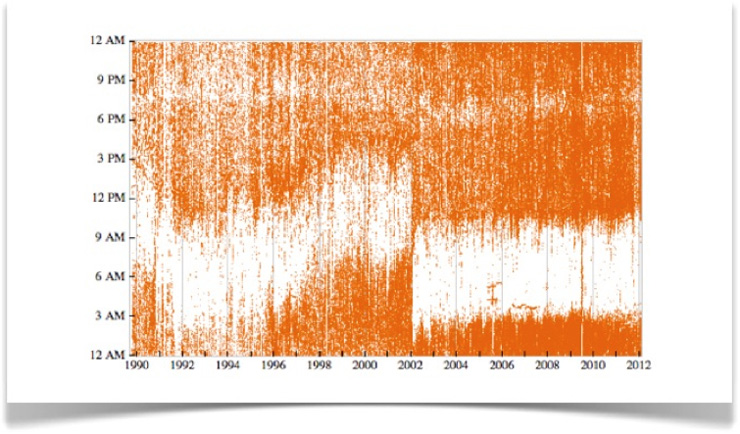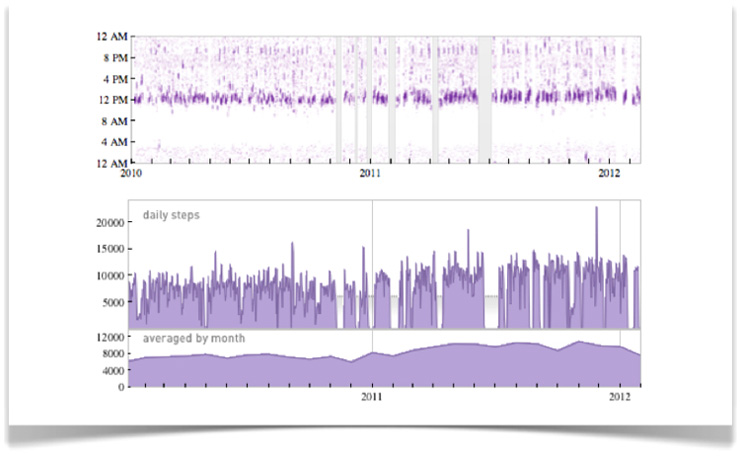Imagine life in 25 years. You’ll have piled up thousands of emails, written hundreds of documents, made countless phone calls and text messages, and posted innumerable amounts of material to social networking websites. In that time, so many things will have happened – your digital content, mile-markers along the way. What might it all say about you?
Some seem to think it will say a lot. Stephen Wolfram, the mastermind behind the Wolfram|Alpha computational search engine, is heading up the project. His new product, Wolfram|Alpha Pro, is a high-powered analytical engine that works by making sense of heaps of data.
Wolfram|Alpha Pro would compile and organize data and develop interpretations and visual abstractions about anything. It could help you to make sense of your e-mail traffic or exercise routine, do vocabulary analysis, or find rates of individual keystrokes or phone calls.
Then all you need to do is ask a question and the engine attempts to come up with an answer. Wolfram|Alpha Pro looks for patterns and trends about all sorts of things in your life.
At first it was just an idea, but Stephen Wolfram wanted to see if his search engine could actually work. Could it make sense of 23 years of his accumulated digital life? After all, never before have we lived during a time when so much information about our lives, about how we think, communicate, act, and live, can be accessed, formatted, and interpreted by computers and analytical engines.
So Wolfram came up with was his very own ‘personal analytics’ – the first ever attempt at dumping all of one’s accumulated digital content into an engine for interpretation. What he realized about his own life and what he saw in the trends of his graphed existence really intrigued him. You can read all about his reflection on the graphical analysis made possible by Wolfram|Alpha Pro on his blog.
But to give you an idea of what this engine can generate, take for example this graphical analysis of Mr. Wolfram’s e-mail use:

Each orange point represents one sent email. Yes, Mr. Wolfram e-mails a lot. But he is a CEO of a giant company, and his sheer volume of data helps explain the point. Looking closer, the graph gives an indication of his sleeping trends – represented by the large horizontal white space. More dense areas of orange indicate a frequency of communication that may be translated into something meaningful.
Wolfram reflected that graphical analysis informed him about his own trends of creative energy and the trends of his personal achievements: Wolfram could chart the trends from a good idea to a product, as well as milestones in his own health.
Take for example the data he graphed about his health and fitness. Mr. Wolfram recorded his daily steps using a pedometer. He then plotted that information into Wolfram|Alpha Pro and this is what he came up with:

He was able to see the amount of steps taken per day, which gradually rose over the two-year period, and he was also able to see when he was walking around the most (the upper half indicates the number of steps taken at various times during the day).
If we integrate powerful, computational engines like Wolfram|Alpha Pro with the fact that just about every facet of our daily life now can somehow, in some way, be recorded as usable data (as through Facebook, e-mail, texting, online calendars, the list goes on and on), the potential of achieving a more resounding personal awareness is limitless.
I’ve always thought that one hallmark of Evergreen’s unique style is the reflection process – whether it be academic or personal reflection. So with new developments in analytical, computational technologies – developments like this one – it seems we could be heading in a direction that furthers the understanding of our own lives.
Featured image: University of Michigan Library Card Catalog by dfulmer / CC BY

nice article. hey why aren’t there facebook-like /tweet buttons?